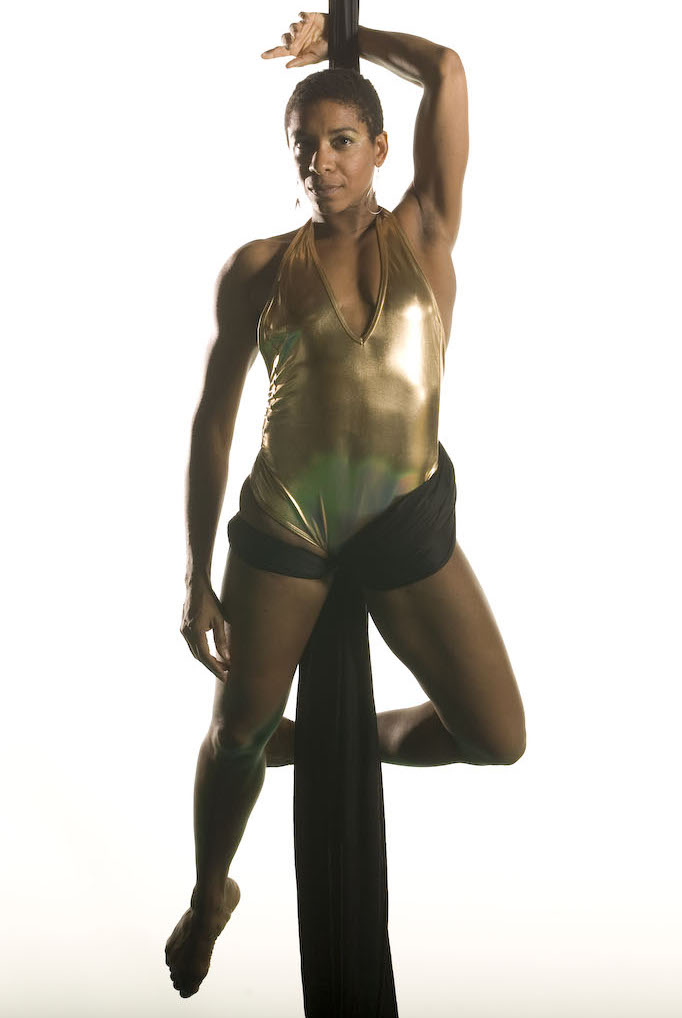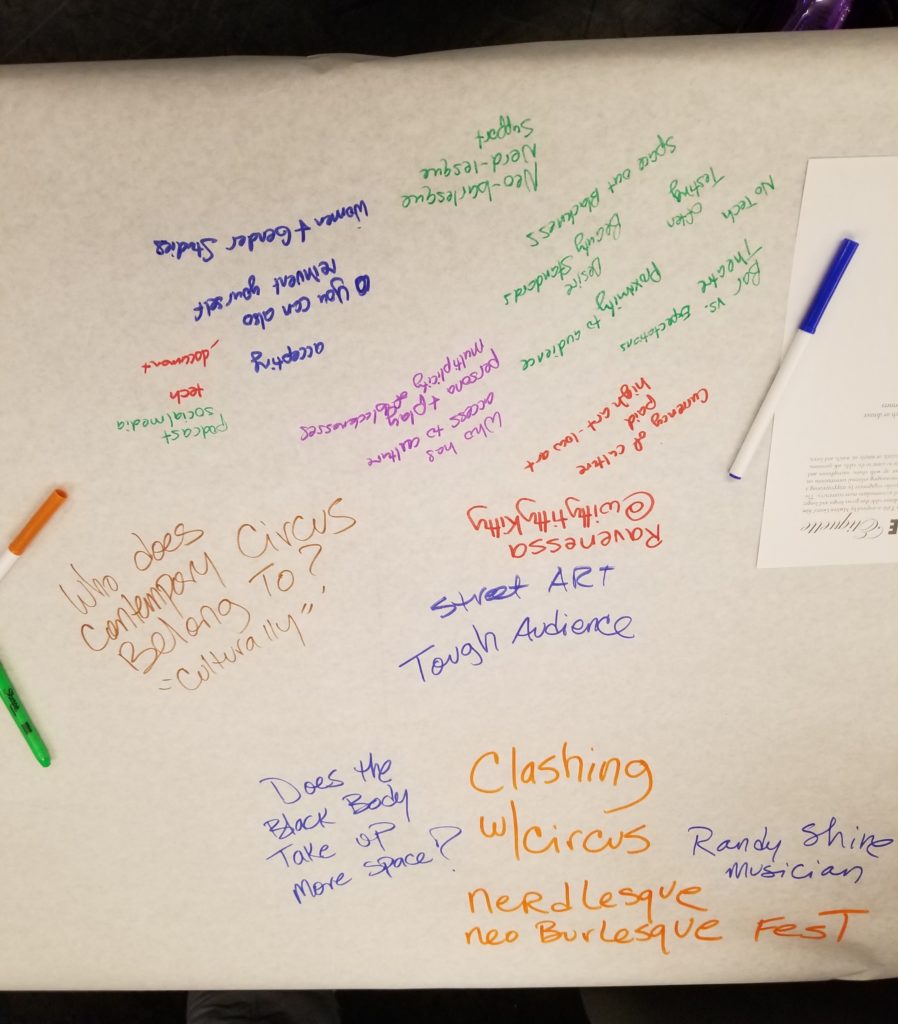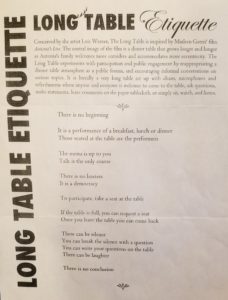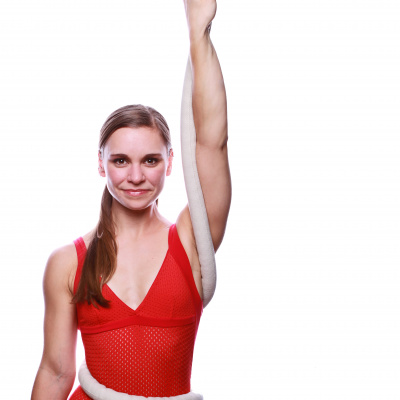People of Color in Contemporary Circus: A Long Table Discussion
Two long folding tables covered with white paper are arranged in the center of a studio at Gibney Dance. Colorful markers are strewn about. Gibney, a prominent dance institution in New York City hosts a myriad of community events; Long Table discussions are one of them. This discussion, entitled ‘People of Color in Contemporary Circus’, was extremely well attended and lasted over two hours. There was a lot of laughter as stories were shared and thoughtfulness as questions were posed. Much more was said than what this series of articles can summarize; highlights from the conversation have been extracted here. The aim of these articles is to, in the spirit of the Long Table Discussion, be yet another avenue through which the conversation can continue. And most importantly, give space for the voices of people of color in contemporary circus.
The core participants for the evening sat at the table: Kiebpoli “Black*Acrobat” Calnek, burlesque performer Denae “Ravenessa” Hannah, Paris the Hip Hop Juggler, and Susan Voyticky, Artistic Director of Loki Circus Theater. These professionals helped guide the conversation, but anyone was welcome to sit at the table, share thoughts, and ask questions. Monique Martin, Director of Programming at Harlem Stage and the event’s guest host, began.
Martin: This is a performance of a dinner table conversation. Talk is the only course that is being served tonight. There is no end, but there will be a conclusion. We want to keep this conversation rolling and going… We are here to ingest some circus.
Martin spoke about her own first encounters with contemporary circus on the streets of San Francisco. This sparked the conversation.
Paris: What I really liked the most [about street performing] is that I earned what I got. Literally. I earned the audience, I earned the eyeballs, and on top of that — with this economy — I earned their dollars.
Martin: And have you found — just being outdoors in a black body — what is that difference between being indoors?
Paris: Of course, I have to deal with the usual things that, unfortunately, a lot of black men have to deal with. Not always, but it does happen to me, and it’s not a surprise that the other white street performers didn’t have to deal with it. In terms of things like, proving that I belong there and proving what I do is legal, or working a little harder to get the trust from the audience and getting an audience volunteer. As a person of color coming from Harlem, that has been my life. I have always had to work harder to get to the same spot… I did the Kentucky State Fair. I’m performing in a place where people in the audience have the confederate flag on their t-shirts coming to me, telling me how much they liked my show. They have no clue what that means to me in terms of your shirt, but if I’m given the right setting, I feel like I can succeed.
Ravenessa: I don’t perform outside because it’s illegal (laughter)… I will say there’s a difference in doing a bar show where people are like, ‘Oh a show is now happening’, versus, ‘We’ve bought a ticket for this particular variety show.’… When you bring sexuality or sensuality to people on surprise, they have different reactions… I do have times when people are explicit about, ‘Oh, a black body is really close to me; oh, a naked black body is really close to me and I have feelings about that.’ I have shows where they say, ‘We need to space out the black artists.’ Where it’s like, ‘Ya’ll can’t go back to back. We have to have you [perform] and then two more [numbers] and then you can go again.’
Martin: And what do you think that is?
Calnek: There are so few of us. (laughter and sounds of affirmation)
Martin: Is it to stretch out the cornbread? Or is it that the cornbread is too rich and you need something in between?… Race relations and the history of this country is very unique compared to other parts of the world, so it’s fascinating to think about the black body almost nude and what comes up for people. Not just people that are not of color, but even people of color. There’s a conservative black population as well. It’s an interesting conversation to tease out how much space the black body takes and how much people can take of the black body in space.

Calnek: Oh yeah, I want to give them more… When you asked about street performance, I immediately thought of the work that we did together at Summer Stage up in Harlem and other outdoor performances that I’ve done where I am so happy to represent. I am so happy to be that brown person flying. I’m so happy to have that visibility to inspire a child… I’m going to do my amazing performance, just like maybe you’ve seen on television — maybe someone who doesn’t look like you doing it. I’m going to do my amazing performance, in my style, and my body, and my power. It’s been really positive. At outdoor performances, I haven’t had any negative experiences. It’s actually been the opposite. I’ve had people come up to me and be empowered, and thrilled, and want to learn more, and take classes, and, ‘Tell me your story.’
Ravenessa: In burlesque, because the concept of beauty is addressed in some way, I think there is this issue of, ‘What is classic beauty?’ Some performance harkens back to vintage, and well, black people weren’t there in vintage times! It’s this wavy, blond, Marylin Monroe kind of look… I’ve had audience members be like, ‘Oh my gosh, I just haven’t seen a black woman do this. This is amazing. You have a different body type than the other body types.’… A lot of producers are white, and they have a specific idea of the ideal beauty… Also skin tone: there aren’t a lot of dark-skinned burlesque performers either. You might get ethnically ambiguous, you might get a little closer, but it’s very rare that you see a very deep, dark-skinned woman as a burlesque artist. It’s not cast very much.
Voyticky: Performing outdoors is exhilarating. You’re so close to your audience. There’s no barrier for entry. They [audiences] don’t have to go inside a building or have to have heard about it. They can literally be walking down the street and say, ‘Wow this is in front of me, and this is happening.’ I wish I got to perform aerial outdoors more, but it is cost-prohibitive– a lot of work and a logistical nightmare… In a lot of spaces I’ve moved in — France, and England — I was often the only person of color. As I came back to the States, often I still am the only person of color in the room. I felt very fortunate to work with the Universoul Circus… I was only with them for a short part of the tour, but every day, twice a day, we would fill the entire tent from communities of color. It was one of the most amazing experiences of my life to, at 10 am, be performing for 2000 black children, and this is the best day of their lives. ‘I’m not in school–this woman is flying!’
Martin: ‘And she looks like me!’
Voyticky: Exactly.
The conversation segued into various definitions for contemporary circus. Ravenessa offered the terms neo-lesque and nerd-lesque as other genres to be included in the conversation as ways the circus arts are digressing and becoming distinct from their traditional predecessors.
Ravenessa: There are a lot of thoughts about racism, fetish, exoticism. Because there is still an understanding that to be other is to be sexy. To be exotic is to be sexy. The way I see a lot of performers take this on is to become a person of color — to become more exoticized in one way or another. And with the internet nowadays, those things are being challenged immediately.

Paris: Contemporary circus sometimes in people’s minds really means a European look and feel… If you’re hiring The Hip Hop Juggler, especially if you’ve seen my photos, it’s not a European guy… The pressure [to fit a European aesthetic] does exist but it doesn’t contain me. If they want something that looks like Cirque du Soleil, they’re probably not looking at me anyway.
Eva Yaa Asantewaa (Curatorial Director, Gibney Dance): Where do you find your support as a person of color in this field? Where did you originally find it, if you did, and if you did not find it, how did you keep yourself going in the field?
Ravenessa: I now find that my fans are my biggest support… There are a lot of particularly black women who are like, ‘I don’t get to play with my sensuality in public, and I really appreciate the questions you ask and the types of acts that you do… I have an office job where I have to take on more of a masculine-type of working, and I don’t get to play in this other space.’ There’s a lack of spaces where people can play with their sensuality as adults.
Paris: Support systems come down to whenever you see [a] person of color circus performer you want to branch out, get in touch on a deeper level. There’s usually some great stories of how they make it, how they survive, how they find ways to express their artistry in ways that they are happy with… Earlier this year we [Paris and Randy Shine, a magician] went to a black college in North Carolina, and there was nothing but black faces in the audience. I thought it was strange because as a juggler I thought I was doing the least black thing you could possibly do at a black college. But they were all for it because they saw juggling presented in a way that related to them. They knew that music, they knew that style, they understood the comedy, and they were having a good time.
The conversation continued with thoughts about circus as a storytelling medium and how, particularly in America, bringing these stories to fruition requires funding. It was a robust beginning with many ebbs and flows from very serious thoughts to joyful and funny comments. In the next article covering this event, we will continue the conversation, and you will read beautiful and personal stories and thoughtful questions about asking permission, access to culture and the power of representation.

Feature photo: From left: Kiebpoli Calnek, Paris the Hip Hop Juggler, Monique Martin, Eva Yaa Asantewaa, Ravenessa, Susan Voyticky. Photo courtesy of Madeline Hoak....
Do you have a story to share? Submit your news story, article or press release.




